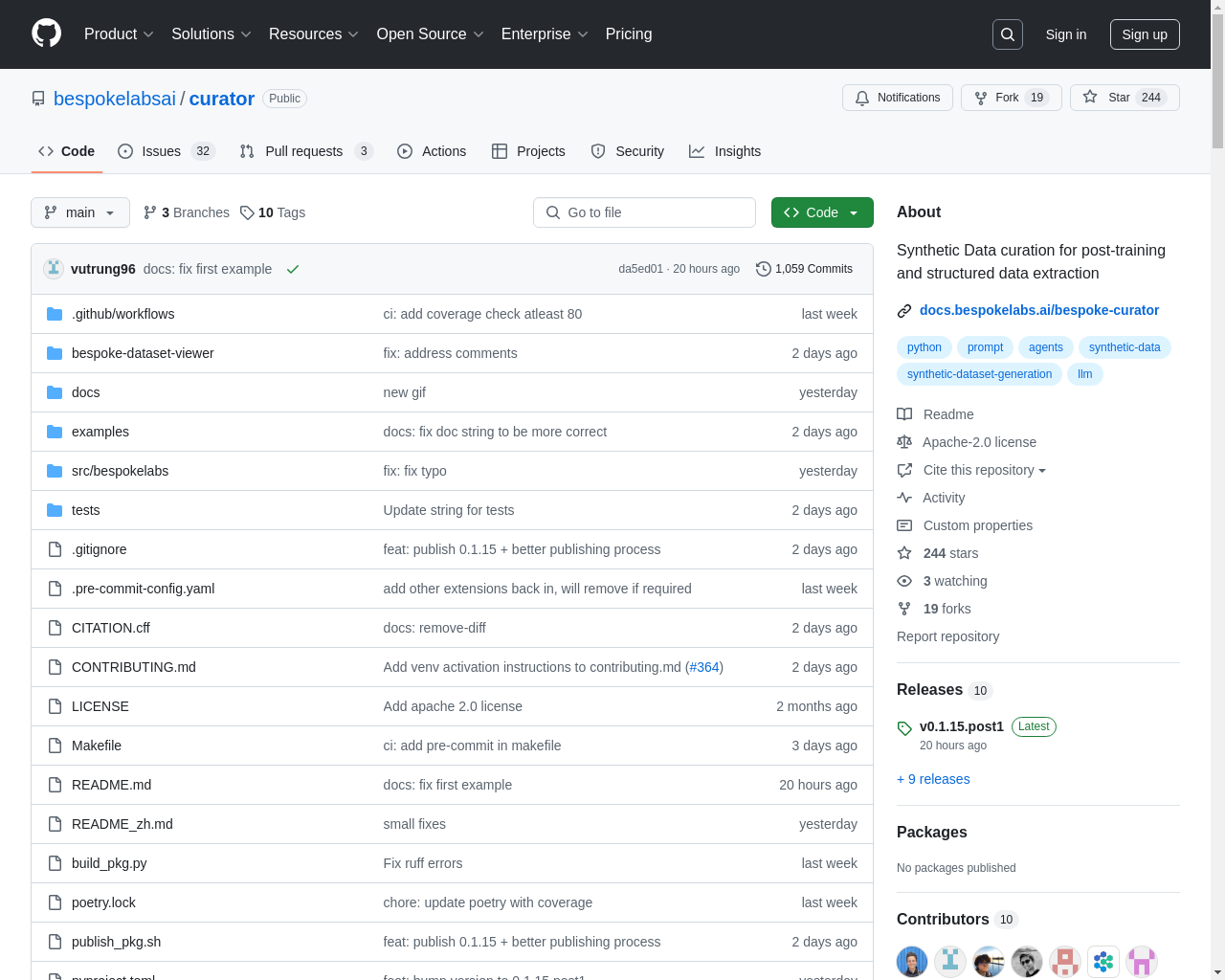

Highlight 1
Curator effectively manages large-scale data generation, accommodating millions of prompts while ensuring system resilience through output caching and failure recovery.
Highlight 2
The support for structured outputs allows users to create and program complex data generation processes, making it versatile for various use cases.
Highlight 3
The real-time data visualization feature helps users monitor the data generation process, enhancing decision-making and transparency.

Improvement 1
The library could benefit from additional documentation and tutorials to assist new users in understanding its functionalities and use cases more comprehensively.
Improvement 2
Introducing metrics for data quality indicators and verifiers would enhance the reliability of the generated synthetic data.
Improvement 3
Broadening the integration capabilities with more API providers or data generation tools could make it more adaptable to different user needs.
Product Functionality
Enhance data quality metrics and verifiers to improve the reliability of generated data.
UI & UX
Consider simplifying the interface for creating complex pipelines so that it accommodates both novice and experienced users.
SEO or Marketing
Develop a comprehensive marketing strategy that highlights unique features and showcases user success stories to attract more users.
MultiLanguage Support
Implement multi-language support to reach a wider audience and enable global collaboration.
- 1
What is Curator?
Curator is an open-source library designed to streamline the synthetic data generation process for training and evaluating large language models and agents.
- 2
How does Curator handle failures during data generation?
Curator is built to recover from failures and caches previous outputs, ensuring continuity and efficiency in the data generation process.
- 3
Can I visualize the data generation process in Curator?
Yes, Curator includes a real-time visualization feature that allows users to monitor the data generation process as it unfolds.
